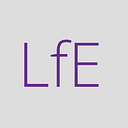R23–1080 Critical Analysis and Writing
MATS31330
Held in a lecture theatre, about 100 students
Overview: Session was designed to help 3rd Year Undergraduates critically analyse and synthesise sources for their final project. Lecturer had mentioned that it was the synthesis of sources which had been noticeably lacking in previous years’ projects.
Considerations for the session: Mentimeter was used as the session was given in a large lecture theatre, but trainers also went round to talk to groups during activities to check understanding. For smaller groups, could dispense with Mentimeter completely.
Historically, there is an issue around the step between the critical reading and critical writing stages (respectively) — this stage should therefore be supported in particular. It could also be helpful to demonstrate how to go about analysis and how to bring sources together into conversation.
Session outline: Introduce the students to the ‘Learn, Connect, Create’ model. Make clear this is A MODEL and not the only way to think critically.
The students should be doing most of the work in the reading phase, rather than leaving it to the writing phase. Reading should be about questioning the text and therefore the answers or responses to these questions should be recorded as annotations on the source or in a separate document.
Can use the Academic Phrasebank ‘Being Critical’ tab as a series of questions to ask of the text if this is helpful. Broadly speaking, questions to ask or consider:
- Is the author/s working within any theoretical or methodological frames? How is then influencing the analysis/results/conclusions?
- Are any assumptions being made? What are the implications of this?
- Have the authors published similar papers before? Is this a development of current ideas or completely new?
- Do you agree with their conclusions and analysis? Is there anything left out of the analysis or discussion?
Three excerpts of sources are provided which are all to do with greenwashing practices in fashion.
Analysing sources: always best to analyse the sources individually first and then think about what the connections are once a couple of sources have been read.
Writing Critically: to encourage the students to think about which words or phrases are used in sources to indicate criticality. Key here is specificity — writing the author’s surname will help with this. Also to point out that students don’t have to account for the whole of the paper (as in, don’t need to narrate everything which is discussed). It is enough that the relevant points to their question/topic are mentioned.
